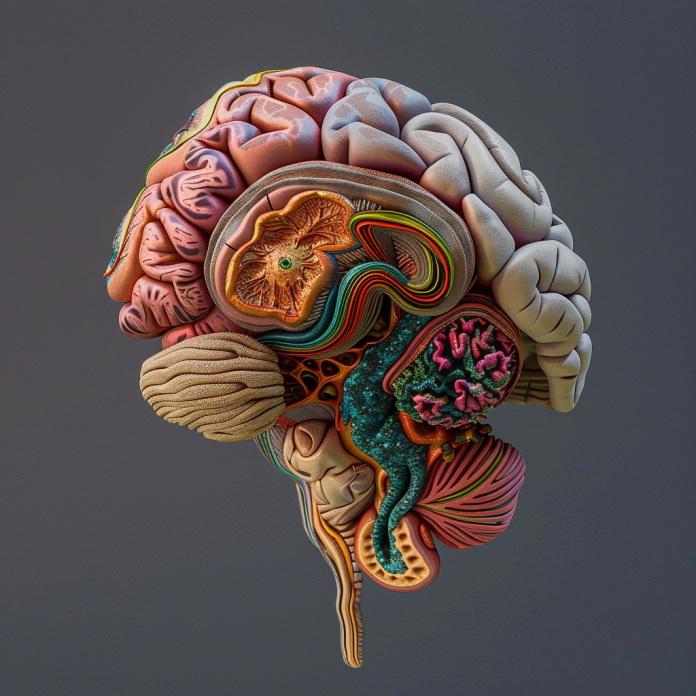Adapting Preschool Memory Training Programs for Different Learning Styles
I. Introduction
Importance of Recognizing and Catering to Learning StylesIn the realm of preschool education, understanding and accommodating diverse learning styles is paramount. Each child possesses a unique way of processing information, making it imperative for educators to tailor their teaching methods accordingly. By recognizing and catering to these individual learning styles, educators can foster a more inclusive and effective learning environment. Moreover, acknowledging and respecting diverse learning styles fosters a supportive and inclusive classroom environment, where every child feels valued and empowered to learn. The Umonics Method offers a comprehensive approach to preschool memory training, focusing on holistic memory development for children between 3 and 6 years of age.
Diversity in Learning Approaches Among PreschoolersPreschoolers exhibit a wide range of learning approaches, influenced by factors such as cognitive development, personality traits, and sensory preferences. Some children thrive in visually stimulating environments, while others may prefer auditory or kinesthetic experiences. Acknowledging this diversity enables educators to design memory training programs that resonate with each child’s preferred mode of learning. This diversity underscores the importance of adopting flexible teaching methods that can effectively address the varied needs and preferences of young learners. The Umonics Method recognizes and accommodates diverse learning approaches among preschoolers, offering a holistic memory development program tailored to individual preferences and strengths.
II. Understanding Individual Learning Styles in Preschoolers
Visual Learners: Strategies for Visual EngagementVisual learners absorb information best through visual stimuli such as images, charts, and graphs. For preschoolers with a visual learning style, incorporating colorful visuals and interactive activities can enhance memory retention. Utilizing flashcards, picture books, and educational videos engages their visual senses, making learning both enjoyable and effective. Employing visual aids not only enhances comprehension but also encourages active participation and fosters a deeper understanding of concepts among visual learners. The Umonics Method integrates visual strategies to facilitate memory retention and comprehension in preschoolers.
Auditory Learners: Enhancing Memory through SoundAuditory learners thrive in environments rich in auditory stimuli. These children excel in remembering information presented through sound, such as songs, rhymes, and storytelling. Memory training programs tailored to auditory learners may include mnemonic devices set to catchy tunes, oral repetition of key concepts, and audio recordings of educational content. Utilizing engaging auditory stimuli not only aids in memory retention but also cultivates a rich auditory environment that stimulates learning for auditory learners. The Umonics Method leverages auditory techniques to enhance memory recall and auditory processing skills in preschoolers.
III. Customizing Memory Training for Visual, Auditory, and Kinesthetic Learners
Visual Strategies: Incorporating Images and Visual AidsTo cater to visual learners, memory training programs can integrate visual strategies such as using colorful illustrations, diagrams, and mind maps. Hands-on activities like drawing, painting, and building with blocks engage their visual creativity while reinforcing memory retention. Incorporating gestures and facial expressions enhances their comprehension and recall. Furthermore, integrating hands-on activities that allow visual learners to manipulate and interact with visual materials can reinforce learning and promote deeper engagement with the content. The Umonics Method emphasizes hands-on learning experiences to enhance memory retention and visual comprehension skills in preschoolers.
Auditory Techniques: Using Music and Verbal CuesFor auditory learners, memory training can leverage auditory techniques such as incorporating music, rhythm, and verbal cues. Singing educational songs related to memory concepts, reciting rhymes, and conducting group discussions stimulate their auditory senses and facilitate information processing. Utilizing storytelling and audio recordings further strengthens their auditory memory skills. Additionally, incorporating storytelling and encouraging active participation in group discussions can further enhance the auditory learning experience by providing opportunities for auditory learners to process information through verbal engagement and interaction. The Umonics Method utilizes auditory stimuli and verbal cues to enhance memory recall and auditory processing skills in preschoolers.
IV. Inclusive Approaches for Diverse Learning Styles
Recognizing and Embracing Learning Style DiversityEmbracing learning style diversity fosters an inclusive learning environment where all preschoolers feel valued and supported. Educators should celebrate each child’s unique strengths and preferences, tailoring instruction to accommodate various learning styles. By embracing diversity, educators nurture a culture of inclusivity and equity in preschool memory training programs. Furthermore, acknowledging and embracing learning style diversity not only promotes academic success but also fosters a sense of inclusion and belonging among all preschoolers, creating a positive and supportive learning environment. The Umonics Method prioritizes inclusivity and celebrates diversity in learning styles, ensuring that every child receives personalized memory training tailored to their individual needs.
Group Activities that Cater to Multiple Learning StylesGroup activities offer opportunities to accommodate multiple learning styles simultaneously. Incorporating collaborative projects, dramatic play, and sensory-rich experiences allows children to engage with content in ways that resonate with their individual preferences. Through cooperative learning activities, preschoolers can leverage their diverse strengths and learn from one another, fostering a sense of community and cooperation. Moreover, implementing group activities that incorporate diverse learning modalities not only ensures inclusivity but also encourages collaboration and peer learning, enriching the overall educational experience for all participants. The Umonics Method incorporates group activities that cater to diverse learning styles, promoting collaboration and peer learning among preschoolers.
V. Overcoming Challenges in Catering to Individual Needs
Identifying Challenges in Adapting ProgramsWhile adapting memory training programs to diverse learning styles is essential, educators may encounter challenges along the way. Limited resources, time constraints, and varying classroom dynamics can pose obstacles to effectively catering to individual needs. Assessing and accommodating the preferences of each child requires careful observation and flexibility on the part of educators. Furthermore, balancing the diverse needs and preferences of individual learners within a group setting can present logistical challenges that necessitate creative solutions and flexible teaching approaches. The Umonics Method acknowledges the challenges in catering to individual needs and emphasizes the importance of flexibility and creative problem-solving in preschool memory training programs.
Strategies for Inclusive and Personalized Learning ExperiencesImplementing a student-centered approach, where each child’s progress and preferences are carefully considered, ensures that memory training programs are not only tailored to individual needs but also promote a sense of ownership and empowerment in the learning process. To address challenges in catering to individual needs, educators can employ strategies such as differentiated instruction, flexible grouping, and ongoing assessment. Implementing a variety of instructional methods allows educators to meet the diverse needs of preschoolers while fostering a sense of belonging and empowerment. By prioritizing inclusivity and personalization, educators can create enriching and impactful memory training experiences for all preschoolers. The Umonics Method prioritizes inclusive and personalized learning experiences, empowering preschoolers to develop essential memory skills and reach their full potential.
In conclusion
Enhancing preschool memory training requires a nuanced understanding of individual learning styles and the implementation of tailored strategies to accommodate diverse preferences. By recognizing and embracing learning style diversity, educators can create inclusive and effective learning environments where every child has the opportunity to thrive. Through thoughtful adaptation and innovative approaches, preschool memory training programs can empower children to develop essential memory skills while celebrating their unique strengths and abilities. Moreover, by overcoming challenges through flexible teaching methods and leveraging technology, educators can ensure that memory training experiences are both inclusive and personalized, setting a strong foundation for lifelong learning and academic success. Ultimately, by prioritizing individualized instruction and celebrating diversity in learning styles, educators empower preschoolers to develop essential memory skills and reach their full potential with The Umonics Method.




























